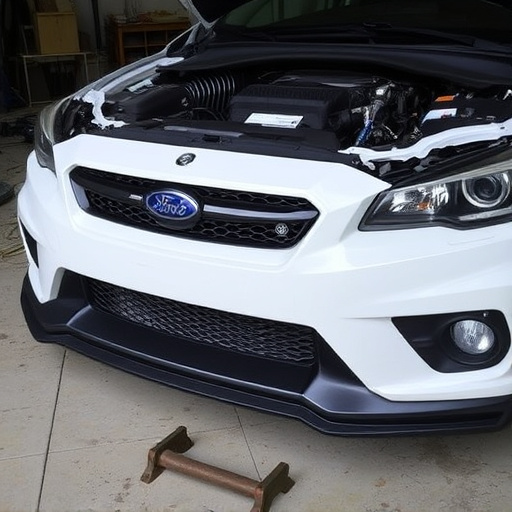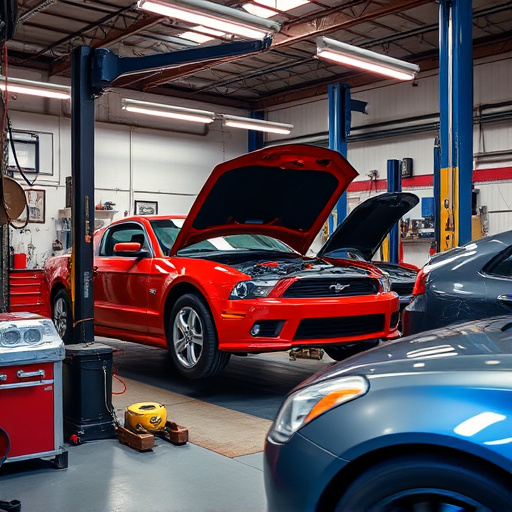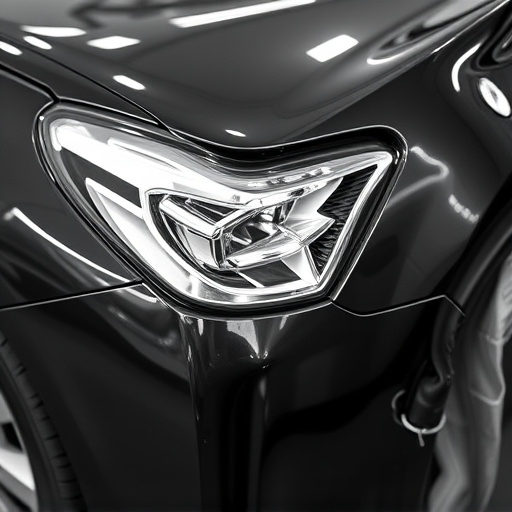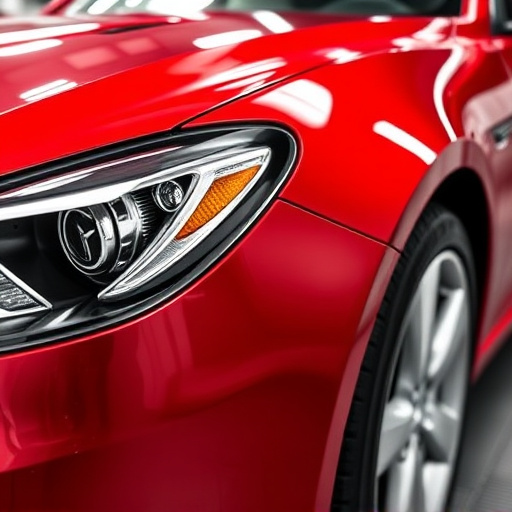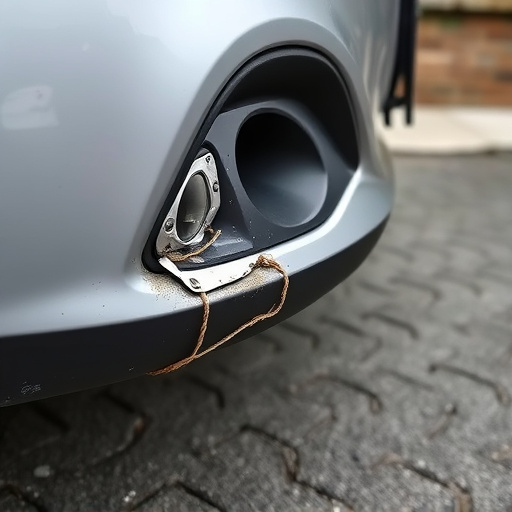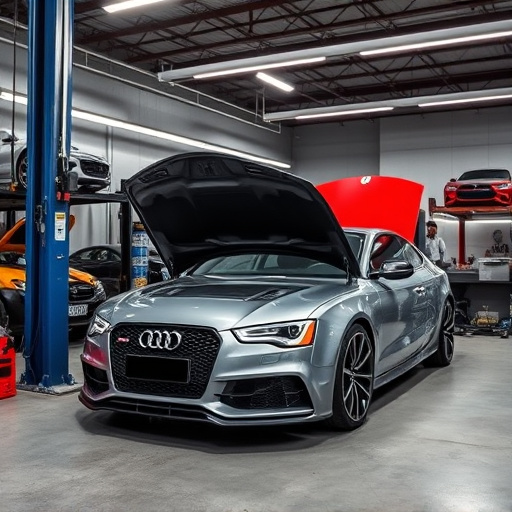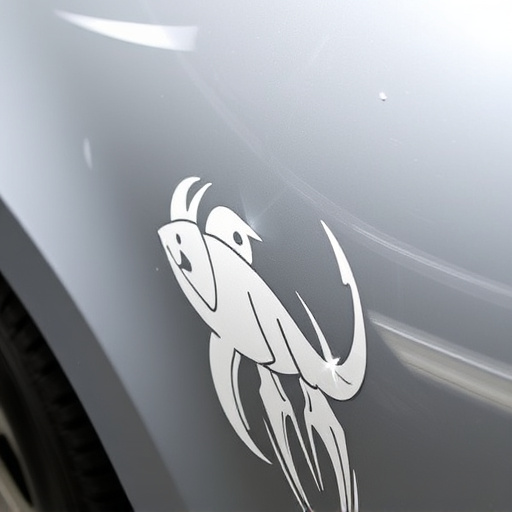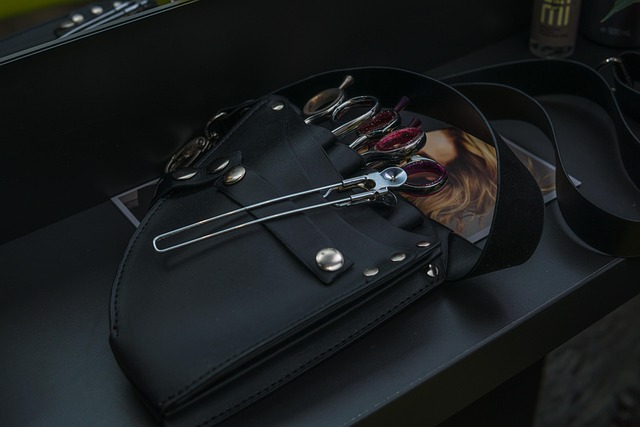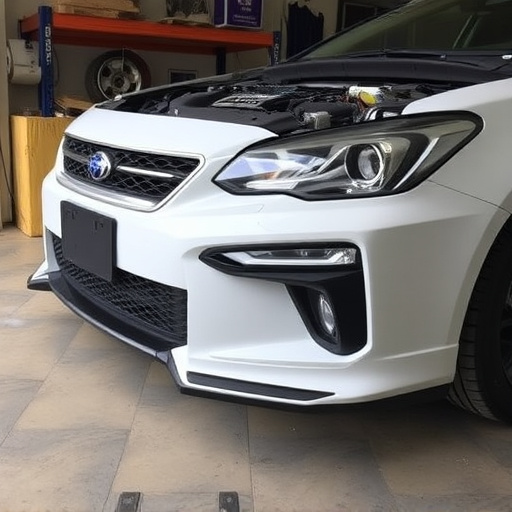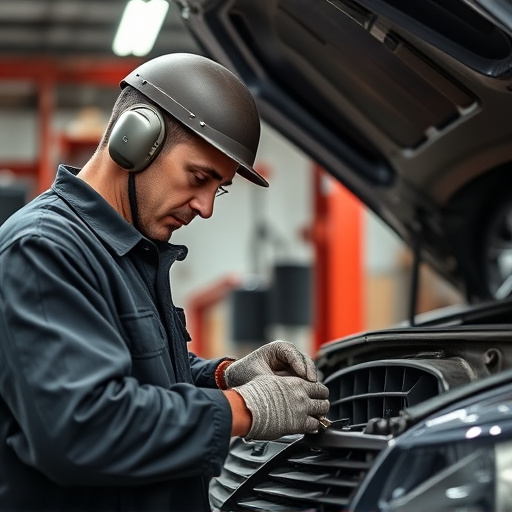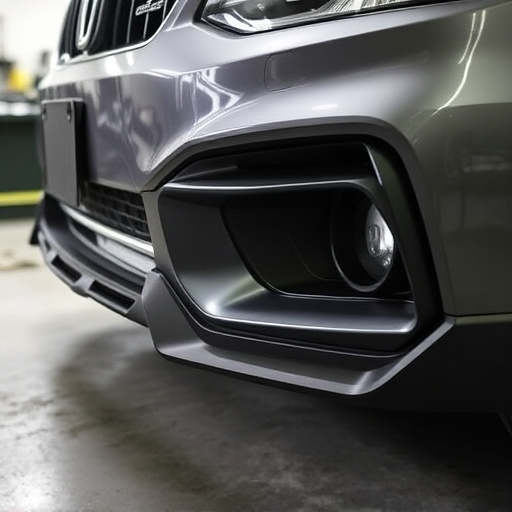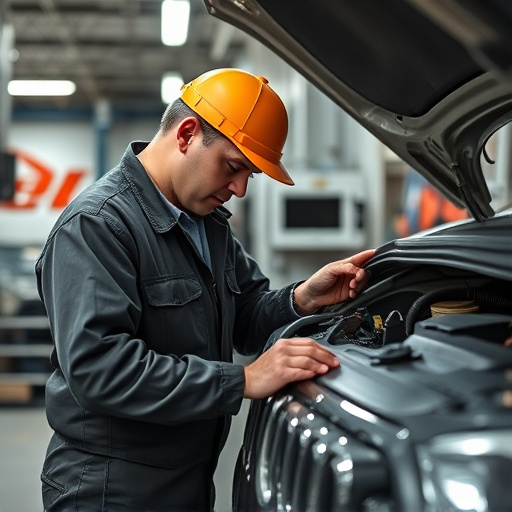The base coat is vital in auto body repair for protection, paint adhesion, and aesthetic finish. Selection depends on car surface types, and application requires skilled preparation, environmental consideration, and thin, even layers for quality finishes, catering to diverse vehicle needs.
In auto body shops, achieving flawless finishes starts with a solid foundation—the base coat. This essential layer not only prepares the surface but also offers protection and enhanced durability. Understanding its purpose and benefits is crucial for ensuring superior results. Learn how to choose the right base coat for various surfaces and master efficient application techniques in this comprehensive guide, designed to elevate your shop’s standards through optimal base coat application practices.
- Understanding Base Coat Purpose and Benefits
- Choosing the Right Base Coat for Different Surfaces
- Step-by-Step Guide to Efficient Application Techniques
Understanding Base Coat Purpose and Benefits
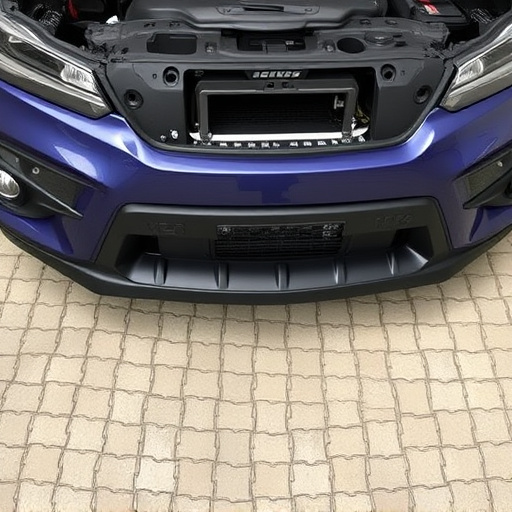
The base coat serves as a crucial foundation in the auto body shop’s painting process. It is more than just a primer; it offers a range of benefits that are essential for achieving a high-quality finish on vehicles undergoing repair, especially in top-tier automotive body shops like those specializing in Mercedes-Benz repairs.
Understanding base coat application best practices is vital for vehicle repair services. This initial layer protects the vehicle’s surface from corrosion, ensuring the longevity of the paint job. It also provides a smooth canvas, allowing subsequent coats to adhere better, resulting in a more durable and aesthetically pleasing finish. This meticulous step is a game-changer, transforming damaged vehicles into like-new ones through expert base coat application techniques.
Choosing the Right Base Coat for Different Surfaces

When it comes to base coat application in auto body shops, selecting the appropriate base coat is paramount for achieving optimal results on various surfaces. Different cars have distinct materials and finishes—from glossy to matte or even metallic—and each requires a specific base coat tailored to its unique characteristics. For instance, a base coat designed for plastic or vinyl may not adhere well to metal, leading to poor coverage and eventual chipping. Thus, auto body shops must stock a diverse range of base coats to accommodate the myriad of car types they service.
Proper preparation is key when applying a base coat in an auto body shop. The surface needs to be thoroughly cleaned, sanded, and primed to ensure maximum adhesion. For instance, using the right primer for rusted metal or preparing a recently painted surface can significantly impact the final outcome. Additionally, considering environmental factors such as temperature and humidity during application ensures that the base coat sets correctly, enhancing its durability and longevity in the car body shop environment.
Step-by-Step Guide to Efficient Application Techniques
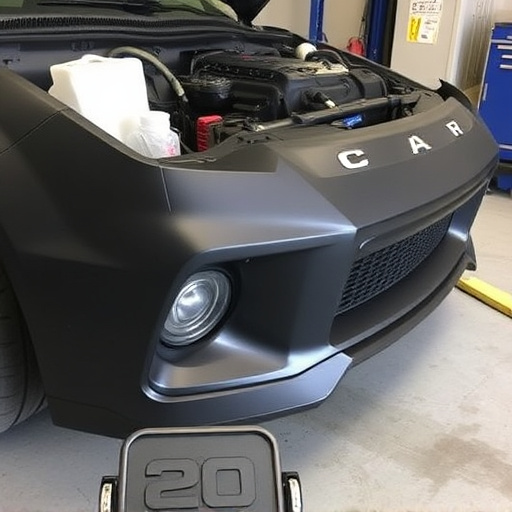
Efficient base coat application is a skill that every auto body shop should master to ensure high-quality finishes and fast turnaround times. Start by preparing the surface, ensuring it’s clean, dry, and free from any debris. A thorough inspection of the damaged area is crucial before applying any base coat—this step involves identifying and addressing any existing issues like dents or scratches using professional dent repair services.
Next, choose the appropriate base coat for your car paint services, considering factors such as the type of paint and the desired final look. Using the right tools makes a significant difference; a clean, specialized applicator ensures even distribution without overspray. Apply the base coat in thin, controlled layers, allowing each to dry slightly before the next is added. This process creates a smooth, seamless surface ready for subsequent coating stages, enhancing the overall quality of collision repair services.
In auto body shops, mastering base coat application is key to achieving high-quality finishes. By understanding the purpose and benefits of base coats, selecting the right product for various surfaces, and employing efficient application techniques, technicians can ensure superior results that protect vehicles and lay the perfect foundation for subsequent coatings. These best practices contribute to a robust workflow and customer satisfaction in today’s competitive automotive industry.
